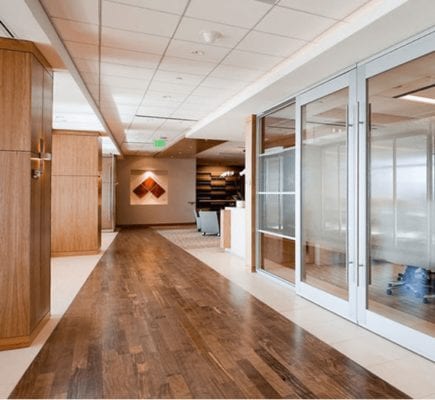
Many knowledge workers are now doing something for the first time that some of us have been doing for a while—working remotely or, more accurately, working from home. There are quite a few challenges involved, and among them is an important one that we’re all too familiar with: data security and data risk. Shifting gears very rapidly and developing new business processes and workflows just adds to the obstacles you must overcome for a secure work environment.
There are probably as many variations of the work-from-home scenarios as there are readers of this article, but there are many considerations that will be universally true, or nearly so.
The Weakest Link in Data Security: Us
First, keep in mind that managing data security and data risk is part software technology, part machinery, part process and part human behavior—and the human bit is usually the weak link. Even if there is some other weakness to exploit, usually that exploitation also requires the unwitting cooperation of a human to be successful. And the human part alone can fail sufficiently to make the rest irrelevant.
Second, data risk is not just, or even mostly, security. Data risk mitigation requires you to have the tools in place to ensure that your data is high quality and well managed so that that your organization can use it effectively.
So, bearing these things in mind, let’s think about what you need to do.
Except for those of you dealing with brand-new responsibilities in response to the pandemic, you’re still doing a version of what you were already doing. The desks are just a whole lot farther apart. Let’s think about what that means:
- If you were dealing with sensitive information before—HR records, company trade secrets or financials, research—it’s still sensitive, and needs protection just like it always did.
- To the extent that you needed to collaborate with others to get things done, you’ll still need to.
- The need to ensure that your data and records are complete and accurate is still there, unchanged.
So how do you make these things happen in a home environment? Just like the old days (only a few weeks ago), you’ve still got an office to work out of. It’s just a different one, and probably not as well organized and appointed as the old one. But if you’re going to make anything good happen, it’s going to happen in your new home office, so let’s start with that.
Maximizing Your Work-from-Home Experience
First, you need to clear a space—a dedicated space—used only for your work, permanent for the duration of this situation. And you must be realistic about what you really need to be successful working in it. There are four main factors to consider.
1. Dedicated space
You cannot share your workspace with your three children whilst they’re coloring, nor can you work effectively when you have to clear off your desk/dining room table for breakfast, lunch and dinner. Trying to do either, or more probably both, will inevitably result in important paperwork getting mixed up or damaged by kid drinks and snacks. So now that you and the kids are stuck at home for the duration, create some dedicated space for each of you, however compact it might be.
2. Monitor
If you usually work on a big monitor or multiple monitors, don’t kid yourself into thinking you can work just as will on a laptop with a single 12-inch monitor. It will drive you crazy, and both your productivity and work quality will suffer. Do not underestimate the aggravation, annoyance and inefficiency of trying to flip through a dozen open documents on a single tiny screen when you’re used to having them all available at once on different screens. I have four 27-inch monitors in front of me as I write this, and they’re worth every penny that I paid for them.
And of course, if you have four big monitors, you need the space for them as well. A corner of the dining room table will not cut it.
3. Paper
The paperless office has not yet arrived. I’ve been working on it for 25 years and I’m as good as anyone at it, but I’m still sitting here with paper on my right and paper on my left. Your workspace needs to accommodate this reality and allow you some space to handle paper. Otherwise you’ll be dealing with another version of the 12-inch screen problem: shuffling through disorganized stacks of printouts to find something you need, with predictable results.
If the paper you can’t find happens to contain sensitive or time-critical information, the stress of frantically searching for it will be just that much greater. Digging through the wastebasket, the recycling and old newspapers looking for something is the height of inefficiency, so don’t do that to yourself. Plan for some real workspace with room to spread out if necessary.
4. Power supply and power surges
You need a lot more electrical outlets than you think you do. You’ll be amazed at how many devices it takes set up a real working rig, and how many power strips you’ll need to meet that demand. Choose a corner of the house that has the maximum number of wall outlets available to you.
If you live in an area where power bumps are a regular occurrence, consider a backup battery/surge protector as well. A power outage or surge can lose a lot of data for you if you’re not prepared for it.
So if you plan on getting anything useful done, create and enforce a dedicated workspace that’s as well-designed as space and money permit. It’ll make your work-from-home experience much more pleasant.
Ignore at Your Peril
Everything I’ve just said may sound very elementary, and elementary it is—but many people ignore it to their regret. Don’t risk having your data destroyed because a rampaging toddler poured her apple juice into your laptop or you threw out a document full of sensitive HR information with yesterday’s newspaper. It’s not as sexy as having Putin or the North Koreans hack your system, but in the end it’s just as damaging.
I speak to all of the above from vast personal experience. For many years I ran a virtual business out of a teeny home office in a tiny house whilst playing Mr. Mom to two preschoolers. They’re grown up and gone now and it’s just the cat—who likes to walk all over my keyboard when he’s not sleeping on it. If you don’t save your work or lock your computer, a child or a pet can do an immense amount of damage in the couple of minutes you’re in the kitchen for a coffee refill. The three-year-old eventually outgrew it, but I finally had to concede defeat and put a pillow on the corner of my desk for the cat to sleep on. That did the trick.
For more guidance on how to reduce risk, check out our white paper:
The Risks and Opportunities of Managing Information Chaos




